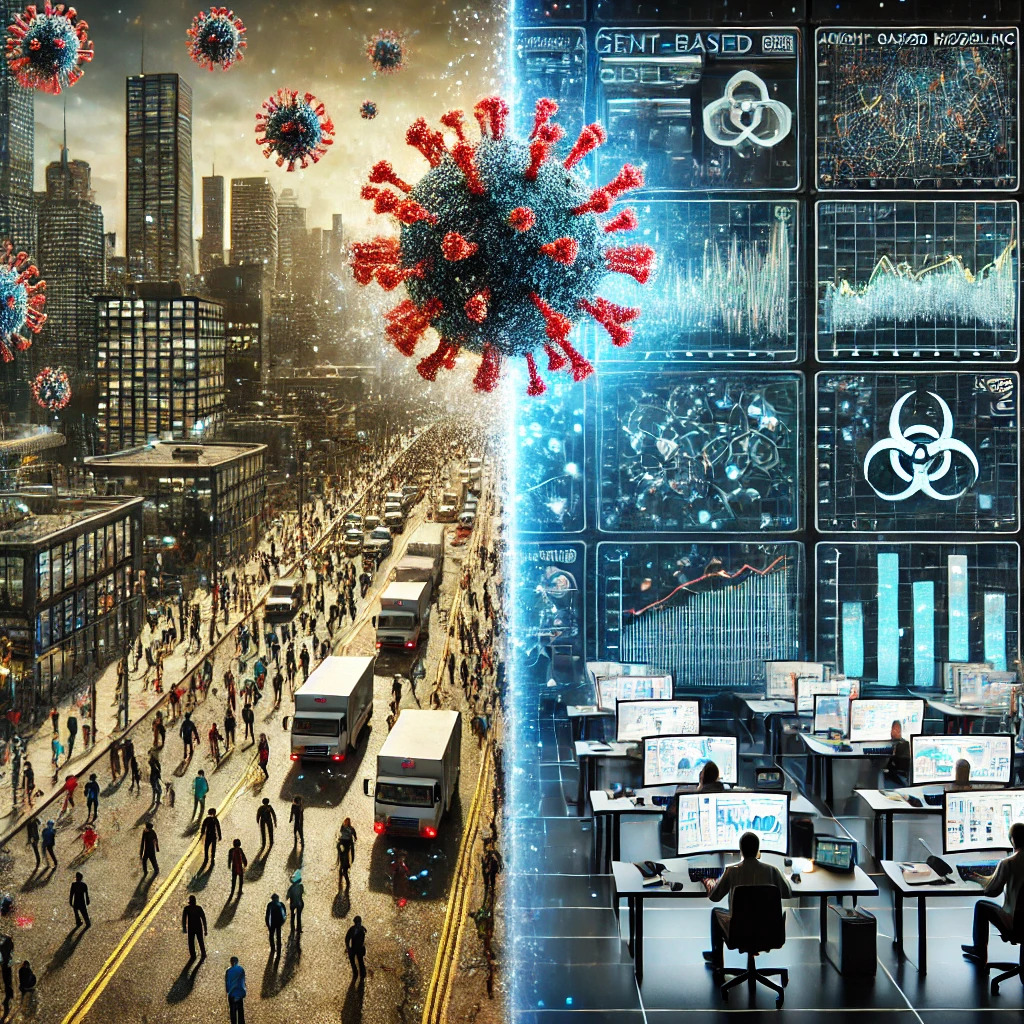From outbreaks to response: How agent-based models are revolutionizing epidemic control
Traditional epidemic modeling techniques, including compartmental, network, and temporal models, have historically underpinned public health strategies. These models simplify population dynamics into mathematical abstractions, offering valuable but limited insights. Compartmental models like SIR and SEIR track groups of individuals based on their infection status but fail to account for behavioral nuances and social structures.

In a hyperconnected world grappling with complex infectious disease outbreaks, researchers are turning to artificial intelligence to simulate, predict, and manage epidemic dynamics with unprecedented precision. A new review published in Technologies titled "Agent-Based Modeling of Epidemics: Approaches, Applications, and Future Directions" by Xiangyu Zhang and colleagues takes a deep dive into how intelligent agent-based models (ABMs) are revolutionizing the science of epidemic forecasting and intervention evaluation.
Amid growing dissatisfaction with traditional epidemiological models that struggle to reflect the complexity of real-world human interactions and pathogen variability, this study positions ABMs as a sophisticated alternative capable of capturing the nuances of human behavior, mobility, and risk perception. By mapping the evolution of ABMs, their architectural depth, and the roles they play in policy assessments, the review signals a paradigm shift in epidemic modeling - from deterministic population-level equations to dynamic, individual-centric simulations.
How do agent-based models differ from traditional epidemic modeling?
Traditional epidemic modeling techniques, including compartmental, network, and temporal models, have historically underpinned public health strategies. These models simplify population dynamics into mathematical abstractions, offering valuable but limited insights. Compartmental models like SIR and SEIR track groups of individuals based on their infection status but fail to account for behavioral nuances and social structures. Network models improve granularity by representing interpersonal contacts as graph structures, capturing heterogeneity in social ties. Temporal models use time-series and machine learning methods to forecast trends but are highly data-dependent and often blind to behavioral context.
Agent-based models break with this tradition by simulating epidemics from the bottom up. Each agent is a digitally simulated individual endowed with unique attributes, such as age, health status, and cognition, and behavioral rules. These agents interact within structured environments, adjusting decisions in real-time in response to risks, interventions, or peer influence. ABMs thus offer a level of granularity and behavioral realism that allows researchers to simulate complex, localized, and evolving epidemic scenarios with greater accuracy.
What are the advantages of intelligent agent modeling for disease intervention strategies?
The review outlines three primary roles that ABMs fulfill in evaluating and optimizing intervention strategies: revealing transmission pathways, simulating vaccination campaigns, and integrating testing with multi-layered responses.
-
Tracing Transmission Chains: ABMs excel at reconstructing early outbreak trajectories, especially when empirical data is limited or delayed. By simulating mobility and contact behaviors, ABMs can identify high-risk environments and infer latent transmission routes. Studies cited in the review show their application across diverse contexts - from modeling subway-based flu transmission in New York to evaluating smartphone-based digital contact tracing for COVID-19 containment.
-
Vaccine Strategy Optimization: ABMs enable nuanced simulation of vaccine rollouts, including prioritization by age or risk group, campaign timing, and logistical constraints. The models can capture the ripple effects of these strategies on community-level immunity and outbreak suppression. Evidence from simulations in the United States, Italy, and Australia consistently shows that behavior-aware vaccination policies outperform uniform approaches.
-
Testing and Mixed Interventions: The models have been widely applied to evaluate rapid diagnostic tests, school-based “test-to-stay” policies, and combined strategies like mask-wearing and distancing. In real-world-inspired simulations, ABMs helped policymakers understand the cost-effectiveness of interventions, particularly in resource-limited or high-density settings like schools, long-term care facilities, and urban centers.
The study also highlights ABMs' ability to adapt to various territorial scales, ranging from individual households and schools to entire nations, and to reflect intervention heterogeneity across populations. In essence, these models support the tailoring of interventions to specific contexts, reducing unnecessary disruptions while maximizing public health outcomes.
What are the challenges and future directions for agent-based epidemic modeling?
Despite their strengths, ABMs face critical limitations that the review does not shy away from. The first is computational complexity: simulating millions of heterogeneous agents with unique behavior patterns and contact networks demands substantial processing power. To address this, researchers are exploring optimization techniques like parallel processing, meta-modeling, and GPU acceleration.
Second, parameter calibration remains a significant hurdle. The need to accurately define behavioral, pathological, and social variables at the agent level makes model validation difficult. Advanced surrogate modeling techniques and sensitivity analyses are being integrated to improve accuracy and reliability.
The most fundamental challenge, as the authors say, is the limited cognitive capacity of current agents. Most ABMs assume fixed behavioral rules and fail to capture adaptive human decision-making in response to misinformation, policy changes, or evolving perceptions of risk. The integration of machine learning and AI-enhanced cognitive models into ABMs could open new frontiers in simulating real-world behavioral volatility.
- FIRST PUBLISHED IN:
- Devdiscourse










